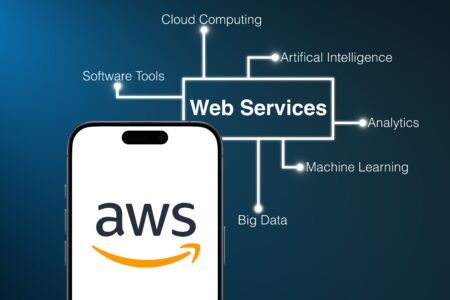I am probably not alone when I say I learned the true meaning of disruptions in the supply chain this past year. And yes, I’m talking about toilet paper! And rice and beans and ramen and sugar, flour, and yeast. Since I’ve lived in the U.S.A. all my life, I haven’t experienced these sorts of shortages before – and since I’m now living in a fairly rural area, it’s not like I can just “go to another store” to get these necessities of life!
We tend to take things on the shelves in the grocery store very much for granted – but there’s a whole industry behind it, and a whole set of technologies that support the supply chain: getting the goods from point A to point B (or manufacturer/producer to seller and ultimately buyer) and getting every entity in the chain paid in a timely fashion.
It’s not surprising that there is a whole lot of technology already in play in the world of supply chain management – but I want to focus on something very timely: Robotic Process Automation or RPA. Here’s a quote defining RPA to start us off: “In layman’s terms, RPA is the process by which a software bot uses a combination of automation, computer vision, and machine learning to automate repetitive, high-volume tasks that are rule-based and trigger-driven.” –David Landreman, CPO of Olive.
Join us for the RPA Expo on May 20th at 11 AM Est
Automation has taken off in the past year, and will continue to provide benefits in the areas of robotization in warehouses, automated trucking, augmented reality, machine learning, as well as global trade and regulations.
Here’s a breakdown of the basic components of supply chain management where RPA is most relevant today:
Order management
This is the heart of managing where goods are going and how they are paid for. At every supply chain company, huge numbers of orders must be reviewed every day: to check inventory, verify pricing, and estimate delivery times from addresses entered. Just imagine how automation can help by automatically checking inventory, calculating shipping costs, and verifying addresses.
For example, the company Aggranda built a software robot called Rudolph built upon the UiPath platform for Ara Toys to process orders from clients, confirm toys are in stock, and ensure on-time delivery. This case study shows how Rudolph saves hours of time previously spent in manual work of reading emails, understanding and operating within the ERP system, checking availability/supply of desired toys, and sending invoices back to clients when items are shipped. Rudolph produces reports and notifies staff when there are issues, so humans can take action only when necessary.
Inventory management
You can’t move goods you don’t have! Bots can keep track of how many products you have in your inventory, order more when needed, and notify employees when more complex issues arise.
Retailers can track the global inventory supply of large volumes of their products in real-time with the Inventory Visibility Add-in for Microsoft Dynamics 365. The Add-in exports information about on-hand inventory in near real time and integrates it with all the available data about markets and orders so that anyone can make a query about available inventory and get the most up-to-date information in order to make better decisions.
Planning for supply and demand
Every business depends on planning, and analyzing large amounts of data is what computer bots are good at. They can gather, store, and present data with complex relationships so that staff can be efficient and effective at projecting supply and demand over time.
To manage the supply chain efficiently, organizations must be able to plan based on data from vendors, customers, analysis of the market, as well as in-house production and sales teams. Finding data from numerous sources, cleaning the data, combining it into reports, running simulations, and producing a plan are all tasks that can be done by computer bots. After automation, staff roles include interpreting simulation results and running meetings to confirm future plans.
Invoice management
Orders come in from customers and sent to production so the goods can be created. Then, after orders are processed, invoices are created. Managing invoices is an internal process – and results in payments to/from suppliers and vendors. Usually invoice management involves extracting, validating, and verifying information, approving payments, and archiving invoices after updating the accounts.
When orders come in from supermarkets for the cookies that the bakery Ana Pan produces – those orders need to be turned into production notifications as well as invoices that contain the delivery date and time, plus all the information their ERP system needs to track the sales. Aggranda built a software robot named Piscot to help process orders and invoices. You can see in detail how Piscot works in this video case study. Making sure that cookies get to supermarkets – something we can all understand!
Customer satisfaction
Automatic emails can be generated at every step in the order fulfillment and shipping process, to keep customers informed. This is not unique to supply chain applications – however, it is arguably more important to keep customers and suppliers informed so that the entire chain keeps running smoothly.
For each of the perhaps thousands of requests from customers about the status of orders, a team member would have to open and read each email, access the ERP system for details about the shipment, formulate the answer to the inquiry, and send the email. A bot can open email, find the information needed in the ERP system, create an email response from a template, send the email and record they type of information sent. The computer bot can answer all the customer inquiries without errors or fatigue – and it can send the tough questions to a human staffer to research and answer.
The RPA global market could see a 30.14% annual growth rate between 2017 and 2022. And as organizations across virtually all industries today are accelerating towards using RPA in their supply chain operations, they are seeing benefits in many areas. Automation that is simple to deploy and use and can be implemented without modification of existing systems is becoming the norm. Organizations see fewer errors and losses, better customer experiences, and improved employee focus and satisfaction as repetitive tasks are taken on by software systems. Who knows, if there had been more automation in the toilet-paper-to-grocery-store supply chain in the early weeks of the pandemic, perhaps the TP supply could have gotten back in balance much sooner!
Curious about RPA and how to choose what is right for your business?
Register for free to join us for an RPA Expo Digital Event on May 20, 2021 starting at 11 AM Eastern for an accelerated master class on the application of RPA to drive business, process and customer value.
Related DAC Content:
The Wrap: Cybersecurity, State of RPA Study, The evolution of Salesforce
Impact, metrics and outcomes of AP Automation






